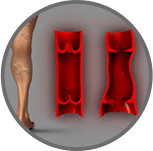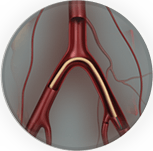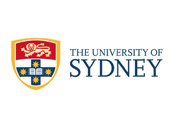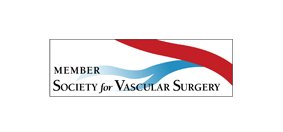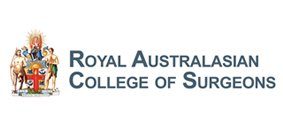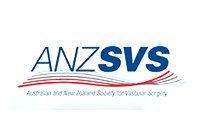Ultrasound Guided Sclerotherapy
Ultrasound guided sclerotherapy (UGS) was developed in Australia, USA, Canada and France in the late 1980’s. It is the process of injecting varicose veins that are visible on the ultrasound monitor but are not visible externally. It enables the eradication of medium sized varicose veins as a rooms procedure. Patients do not lose time or income from work, and are able to continue normal activities, do not undergo anaesthesia or hospitalisation and have no stitches or scars. This is achieved with a procedure that takes about ½ an hour. Abnormal reverse flow of blood back into the leg (reflux) is the fundamental problem of varicose veins. UGS eradicates reflux by closing the veins.
Sclerotherapy is the injection of a solution (sclerosant) into varicose or smaller veins to cause them to close and subsequently disappear. This practice has been used for many years to treat varicose veins and surface veins.
There is no limit to the size of varicose veins that can be treated by this method, though larger veins respond better to endovenous laser. The superior safety and cost effectiveness of UGS should be considered when a choice of treatment exists. Over the past 15 years the understanding, application and refinement of sclerotherapy techniques has created a very safe and effective treatment for varicose veins.
Varicose veins are not suitable for use in coronary bypass surgery. A trend in this procedure is to use arterial rather than venous grafts.
Following the initial consultation and assessment, a Duplex ultrasound is required to create a map of the superficial veins and to assess the competence of the deep veins. This is essential information that enables the treatment of all sources of reflux. The map is our guide during the treatment and is a reference point should varicosities recur.
Procedure
Ultrasound guided sclerotherapy usually involves 2-10 injections into the saphenous vein – most commonly involved from the groin to the knee. The sclerosant is injected as a foam which provides extensive coverage of the varicose veins with small doses of sclerosant. Afterwards, a compression stocking is worn for two weeks in total. A 30 minute daily walk is mandatory. Patients are reviewed 6 weeks and 6 months after the initial treatment. Side effects and complications are similar to those for standard sclerotherapy.
People who are prone to developing varicosities may develop more with time. With proper assessment, non-surgical techniques should achieve the best possible results for the longest period of time with minimal risk and discomfort.
Along with endovenous laser ablation, UGS has made the necessity for surgical stripping virtually obsolete.
The cost of this procedure does not include subsequent treatments for cosmetic surface veins. A Medicare rebate is available for venous mapping and UGS if your GP considers this appropriate and issues a referral.
Prior to UGS Treatment
- You will be asked to sign a consent form for the procedure
- The leg is commonly treated from the skin crease of the groin to the ankle and needs to be accessible. This enables effectiveness of the procedure to be assessed along the entire length of the veins to be treated
- Moisturizer on the skin does not affect the treatment
Following Your Treatment
To ensure success of the treatment it is essential that you take note of the following instructions:
- A surgical compression stocking will be applied and you will be given post-procedure instructions
- You will be able to drive home
- You can go to work the next day
- Walk for at least ½ an hour a day and continue for 6 weeks after the treatment
- Avoid standing for long periods of time if practical
- You will be able to carry on with your normal life-style, however, you should avoid vigorous exercise or strenuous activities (such as squash or high impact aerobics) for a week after treatment
- You may experience slight aching or pain in the leg. If this occurs take two Panadol tablets up to every 4 hours (maximum of 8 tablets in a 24 hour period). Do not rest your legs but continue to walk on a regular basis. If you have any severe or continuous pain or swelling of the leg please contact Specialist Vascular Clinic for advice
- Should the stocking cause any disturbance at night, remove it. The stocking is far less important when lying flat in bed
- Continue to wear the stocking during the daytime for a total of 2 weeks after the procedure
- Trapped blood is relatively common. The treated veins can become firm, red and/or tender up to 2 months after the procedure. This is unpleasant but not serious. If it causes significant pain contact Specialist Vascular Clinic as trapped blood can usually be released and the symptoms improved. It may look infected, however antibiotics are inappropriate (unless you have a fever). It generally resolves in a week or so and normally responds well to anti-inflammatory tablets
- There are no stitches to remove
- Follow-up appointments will be made and you will be reviewed with a Duplex scan after 2 weeks, 2 months and 6 months
- Always bring your compression stockings along for each appointment in case further sclerotherapy is required
Complications
The common side effects and complications are:
Bruises at the injection site will disappear within a few week. Blood trapped in a sclerosed vein can appear quite dark. This often makes the veins more noticeable in the first few weeks following treatment.
Aching in the leg can occur during the treatment and for the first day or two following treatment. It is more common following the treatment of larger varicose veins and is usually relieved by walking. Neurofen, Voltaren Rapid pr Panadol tablets may be taken if necessary.
Blood trapping can form tender lumps along the course of treated varicose veins. It is harmless but may be tender, red and angry. Blood can be drained from these lumps by a needle prick. This may 1-8 weeks after the procedure and will hasten the resolution of any tenderness and help prevent any pigmentation of the skin. Blood trapping is most common in large varicose veins.
Brown lines or marks on the skin at the sites of treated veins: When blood breaks down it can leave iron behind in the skin. These pigmented areas are composed of haemosiderin, an iron containing pigment, and are more common in patients who have navy-blue spider veins treated. Generally they will disappear within months, occasionally longer. In a small percentage of patients they can persist for years.
Matting is name given to networks of fine red veins which develop near the site(s) of previous injections. The thighs are the most common site. Some areas of matting resolve spontaneously, and some resolve with further treatment. Matting is more common in patients with extensive surface veins, patients who are overweight or have a very fair complexion.
If you have questions contact Specialist Vascular Clinic to seek professional advice and/or arrange for a specialist consultation.


